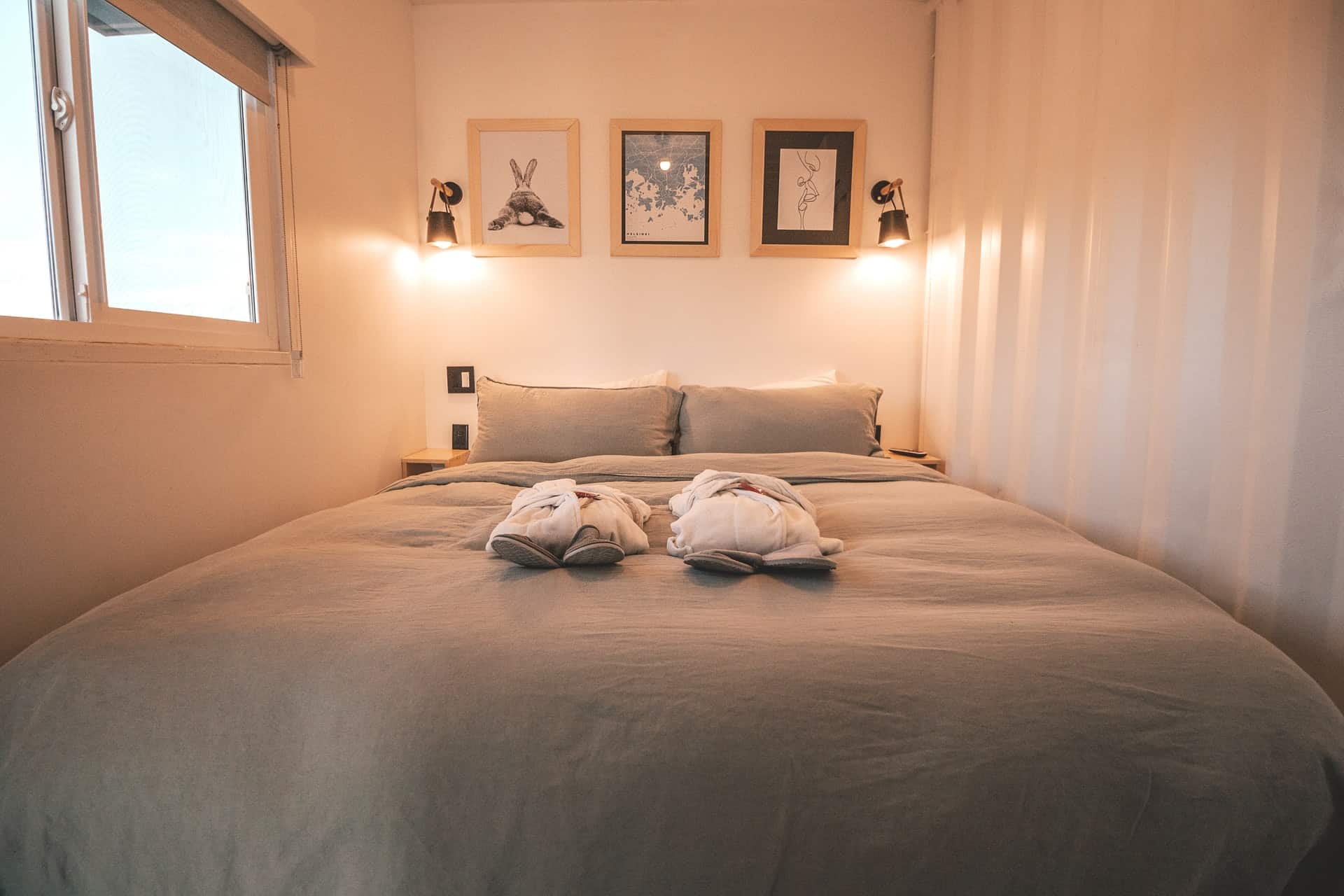Jurij Gagarin, the first man in space, made a turning point in human history when he flew into space in 1961. Space has so far been visited by more than 550 astronauts from many countries around the world. The life of an astronaut seems so unreal. You float all day in the shuttle, turn upside down, eat packaged and prepared food and your urine is filtered into drinking water. But despite the limiting living conditions, you have the opportunity to observe the universe first hand and explore it. After a hard day’s work you go to sleep, but how does an astronaut sleep in space?
Astronauts in space usually sleep in sleeping bags located in small crew cabins. They are fastened in bags so that they do not fly around in their sleep and crash into something. Theoretically, since they are weightless, astronauts could sleep in any position and float, but this greatly increases the possibility of injury.
Sleeping in microgravity can be really weird because there is no down or up in the universe. Astronauts can choose where to put their sleeping bags. The floor, the ceiling, the wall, everything can serve as a place to sleep. Astronauts can even sleep outside sleeping bags floating in their sleep, but there is a possibility of colliding with something and injuries, so sleeping in bags is still recommended. A night of sleep in space is different in many ways than a dream on earth. No lying down, no pillows, no days and nights, so to have quality sleep in space is a real job for an astronaut.
How Do Astronauts Sleep in Space?
Sleep is one of the basic human needs. Lack of sleep can lead to depression, hallucinations and a poor immune system. Astronauts who do such complex jobs in space cannot afford not to sleep. Every astronaut, therefore, has his own sleep station.
A sleep station is a personal space where a person sleeps the size of a telephone booth. The sleep station usually has a sleeping bag, lamp, laptop, personal items and an air vent. It is very important that the astronaut sleeps next to the air vent because in the weightless state carbon dioxide can accumulate around the astronaut’s head and cause suffocation.
It is possible to sleep outside the sleep station, and for that, it is enough to take the sleeping bag to the desired place and fasten it. You can attach the sleeping bag to the floor, to the ceiling, to the wall, practically wherever you want. Since people are accustomed to sleeping in a vertical position, their bags have a pillow that creates pressure on their backs to make them feel like they are sleeping vertically. But it really doesn’t matter if the bag is on the ceiling, wall or floor because none of that makes a difference in sleep since the astronaut has no weight.
Astronauts usually use sleeping masks and earplugs when sleeping. The spacecraft or International Space Station in which the astronaut sleeps is constantly working and making sounds. It is very difficult to fall asleep in such a loud machine so most astronauts use earplugs.
Sleeping bags are tied to a sleep station or other place that astronauts choose. The astronaut then enters the bag and prepares for sleep, leaving his hands outside the bag. For example, if you hook your bag to the wall, your hands rise in front of you in your sleep, making you look like a tired zombie. To wake up, astronauts use an alarm clock or music broadcast by mission control from Earth.
Is it comfortable to sleep in space?
Sleeping conditions in space are not ideal. The light never goes out, as well as the background sounds produced by the engines and the life support system. You enter a sleeping bag that is tied to the floor or ceiling and only your hands are free. No adjusting to a comfortable position, turning on your side, not even lying down. The human body is accustomed to certain sleeping positions that make it easier for a person to fall asleep. You will not lie in space, nor rest your head on your pillow because there is no pillow.
Getting used to sleeping in such conditions is not easy, especially when you are tied to a wall. Your body does not get a signal to lie down so your body temperature does not drop like when you go to bed. Astronauts get into a sleeping bag and wait to fall asleep which can be quite difficult.
Astronaut Ron Garan said he didn’t know how to sleep without a pillow for the first few weeks in space because his head would just freeze. After a few weeks, his neck got used to this strange pose and he finally managed to fall asleep.
They also point out that there is no feeling of relaxation when you go to bed because your body is in the same position it has been in all day. The sounds in shuttle astronauts compare to life in a giant vacuum cleaner, so earplugs are mostly needed for sleep.
A disturbing factor can also be other crew members who move around you, create sounds and talk. The schedule is designed in a way that astronauts go to bed at similar times to make it easier for everyone to catch the rhythm and minimize the disturbance caused by other crew members.
Astronauts have reported that they very often have weightless dreams in space that can last for several weeks after they return to Earth. Their dreams are sometimes related to space and sometimes to life on earth, but very often they are crazy and unpredictable. Astronauts have also reported that in addition to dreams, they have nightmares, and snoring has even been reported, although it is much rarer than on Earth.
Sleep, however, can be made more comfortable if sleep disturbances are reduced to a minimum, if crew members go to sleep at the same time and if they reduce intensity of the light.
Do Astronauts need more or less sleep in space?
It is estimated that a person needs 8 hours of quality sleep to fully sleep. For astronauts in space, 8 and a half hours are scheduled to sleep each day. The astronauts, however, reported that they needed enough sleep for 6 hours to feel rested.
Scientists assume that astronauts feel rested even after only 6 hours of sleep because in a weightless state they do not tire their muscles so much, so their body recovers faster.
However, research conducted by The Lancet Neurology has shown that astronauts have sleep deprivation. Although they have enough time to sleep, astronauts often struggle with sleep which is why sleep-promoting drugs are commonly used in space.
The use of sleep-promoting drugs is understandable given that astronauts in space must be fully concentrated at all times. Fatigue and lack of sleep can lead to lower work efficiency and harm physical and mental health. Lack of sleep is also associated hypertension, heart attacks and strokes, obesity, diabetes, depression and anxiety, decreased brain function, memory loss, weakened immune system, lower fertility rates and psychiatric disorders.The research also led to the conclusion that astronauts have poorer sleep compared to that on Earth.
Lack of sleep, chronic fatigue and work overload can lead to performance errors that can lead to disruption of mission objectives and the safety and health of all space flight participants.
Every day, astronauts record how much they slept and, if required, record details about sleep and sleep quality. Later, the data was used by scientists to study more closely how does sleep in space affects humans and what they could do to make sleep easier for astronauts.
How many hours of sleep do astronauts usually get each night?
The Lancet study examined the sleep of 85 astronauts and found that astronauts sleep an average only six hours each night. Astronauts on shuttle use sleep-promoting drugs for more than half a night, while only 11% of astronauts on the International Space Station use such drugs.
If you are located as an astronaut at the International Space Station, while orbiting the Earth during the day you will see 16 sunrises and 16 sunsets in just 24 hours. As miraculous and amazing as it sounds, astronauts see it every day. These beautiful scenes can significantly affect the quality of an astronaut’s sleep and disrupt his sleep pattern.
Humans, like all life on earth, are adapted to a 24-hour system in which light and darkness alternate due to the earth’s rotation. We are used to sleeping in a horizontal position, and sometimes sleep comes to our eyes when we go to bed even if we do not intend to sleep. But lying in space makes no sense because it doesn’t exist down there. Our bodies don’t get a signal that it’s time to sleep, so it takes time for an astronaut’s body to get used to sleeping in space.
In order to have a coordinated schedule and sleep at regular intervals, astronauts measure time according to Greenwich Mean Time.
Source:
https://www.thelancet.com/journals/laneur/article/PIIS1474-4422(14)70122-X/fulltext
https://www.asc-csa.gc.ca/eng/astronauts/living-in-space/sleeping-in-space.asp

